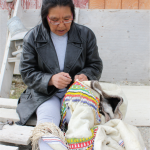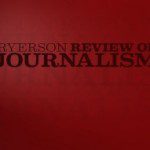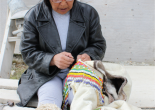The True North
Strong and free and ignored
A: Toronto
B: Calgary
C: Baker Lake, NWT.
You’d be right only about the centre of Canadian insularity if you chose A. But we are trying to pinpoint the geographical centre-the exact heart of our nation. If you guessed Baker Lake, NWT, you win this round.
And if you already knew that Baker Lake is at the geographical centre of Canada, you belong to a very small minority of Canadians. It’s a truism up here in the Northwest Territories that southern Canadians know nothing about the North. People say this all the time, in tones of practised contempt.
Call it regionalism, call it whining, but Northerners can’t be blamed. The information most Canadians get from their southern-based news media is scarce and biased.
There’s irony in the scarcity factor, since no other region of the country has the same symbolic importance the North has. This sprawling chunk of geography is the Great Wilderness that lies at the heart of our national identity: True North, that’s us. Canadians have long cast themselves within this flattering Northern myth, based on accounts of rugged individuals out to conquer a frozen frontier with which we were pleased to identify – but preferred not to know firsthand.
In fact, when southern Canadians speak comfortably about “our North,” Northerners grit their teeth. Most of the folks who live down there in cities strung along the US border have only the vaguest notions about what “our North” really is. The persistent cliche that our part of Canada is a huge emptiness, where Nature’s gifts lie in cold storage, isn’t very popular up here. Yet media coverage in the south does very little to dispel such thinking.
~ How come? Well, I think it has something to j do with the fact that for those whose job it is to ~ inform the country, the North is a single, heroic beat. There’s a print media tradition of oneS handed reportage (doubtless rooted in the literature of earlier romantics) that has created ~ the journalistic “Northern expert,” a sort of itinerant foreign correspondent. No matter what’s going on, from local politics to natural disasters, the North specialist is tapped for coverage that too often turns out to be an exercise in interpretation-by an outsider, for outsiders.
Farley Mowat, Pierre Berton and Mordecai Richler were among those who pioneered this peculiar mischief. And far lesser lights have followed after them. Most have been mere excursionists in our frozen land.
Such stories are necessarily selective in focus; they may be laced with misinformation or worse. What’s perceived by outsiders quite naturally creates a southern-shaped North. In their cosy affection for “our North,” Canadians have accepted a great deal of nonsense. Few ever actually see the place for themselves, after all.
To get to the Northwest Territories, you have to travel a very long way, through land that’s all lakes, bush, muskeg and bony outcroppings of glacier-scraped rock. If you fly into the North, you’re impressed as hell by how much time it takes to get across all that nothingness to the tiny grid of lights that marks whatever outpost of civilization you’re in search of. Not many can afford trips like this.
So the specialist is sent on tour, and comes back with enough for a magazine article or a series on the op-ed page: “The Exotic North as I Actually Saw It, Firsthand.” Others stay a week or two, examining social issues in depth. Some are even based here for a while as stringers. The trouble is, damned few spend years hunkered down in the cold with the rest of us up here, listening to what people really have to say.
And of course, Northerners do have plenty to say. The issues: language rights, the economy, the environment, the future political organization of the North, have a familiar ring. But in a northern setting, they have particular urgency. We have one of the highest birthrates in all of Canada, and the fewest prospects for jobs. We have the most fragile environment in Canada, yet the greatest prospects for resource development. And the federal government, to this very day, continues to treat the North as a colonial entity, voiceless at federal-provincial conferences despite occupying fully a third of Canada’s land mass.
Most interesting of all, we have a population that’s mainly native Inuit, Dene and Metis. We have six official languages, besides English and French. If you didn’t know that, you’re still influenced by bias in coverage of the North that long gave the impression Inuit were the only native group to occupy this land. Inuit were a romanticized people, at one with the simplified Northern Image we held dear. The Dene of the western Arctic and Mackenzie Valley were virtually invisible, appearing only sketchily in accounts of the adventurous bush pilots and prospectors who brought modern enterprise north just over half a century ago.
These people, considerably diverse in language and cultural expression, yet very similar in the ways they wrest a living from the lakes, rivers and subarctic forest, have occupied the North for thousands of years. With the emergence of political will on the part of native groups across the country, northern Dene and Metis have, with Inuit, become faces in the media of southern Canada.
Today’s Northern native people are taking control of their own lands and government, working with their own votes and through powerful and articulate organizations at the community, regional, and territorial levels.
The creation of a new Northern Territory by Inuit grabbed inside newspaper space last December, as did the election of a feisty Inuvialuit woman to the job of NWT premier. These are giant moves on the path to decolonization of Northern peoples, yet they still appear to be marginal events to southern media.
To correct the imbalance of information, Northern media will have to come to the fore. The birth this January of Canada’s first aboriginal television network is a landmark in the battle to provide Northern news, perspectives, entertainment and opinion to Northerners. Thanks to satellite technology, programming can begin to flow regularly out of the North to the south, too.
The magazine I edit, now soldiering into its eighth year of publication, has long carried images and information about Northern life to readers in southern Canada. We plan to continue to do so. In the face of lingering romanticism, careless stereotyping and plain indifference in much of what still passes for journalism about the North today, what else can we do?
This is a joint byline for the Ryerson Review of Journalism. All content is produced by students in their final year of the graduate or undergraduate program at the Ryerson School of Journalism.










































